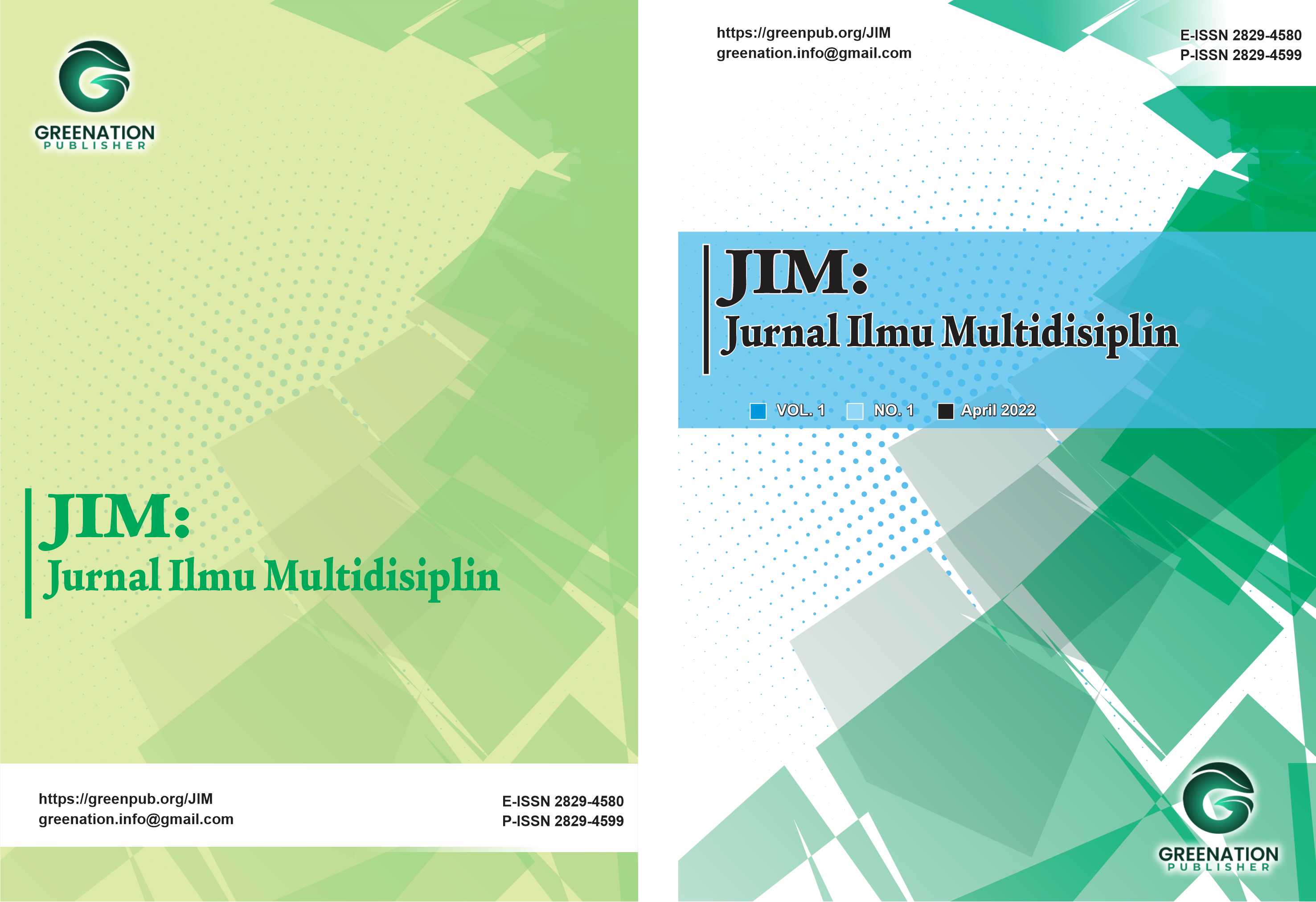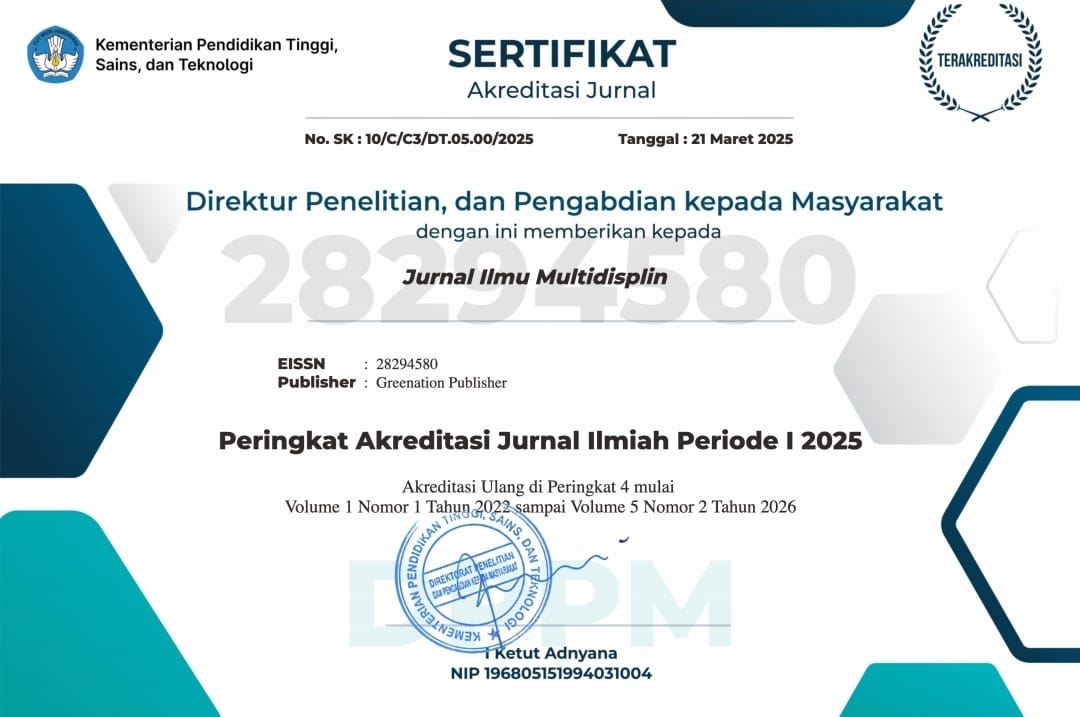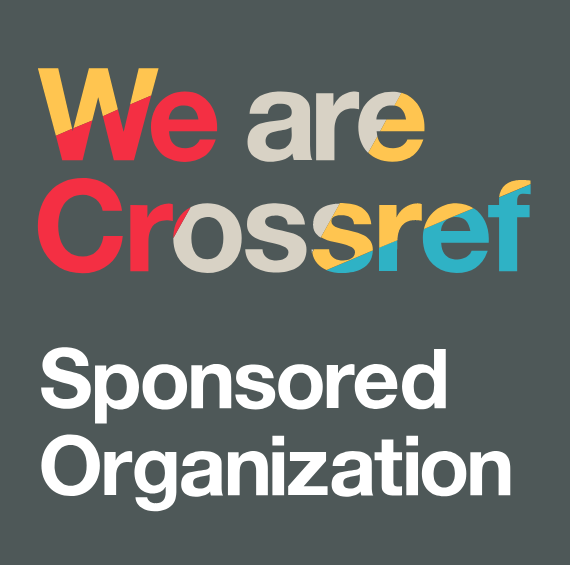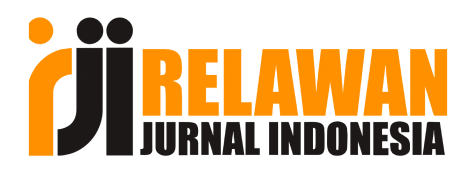Perbandingan Dampak Video Edukasi, Leaflet, dan Edukasi Rutin terhadap Peningkatan Pengetahuan Ibu tentang Tanda Bahaya Masa Nifas
DOI:
https://doi.org/10.38035/jim.v4i1.838Keywords:
Edukasi, Video, Nifas, Tanda Bahaya, IbuAbstract
Masa nifas merupakan periode berisiko tinggi bagi ibu dan bayi, dengan 52% kematian ibu terjadi pada fase ini. Sebagian besar kasus tersebut dapat dicegah jika ibu memiliki pengetahuan tentang tanda bahaya masa nifas. Namun, rendahnya literasi kesehatan dan kurangnya metode edukasi yang standar menjadi kendala. Penelitian ini membandingkan efektivitas tiga metode edukasi—video, leaflet, dan edukasi verbal rutin—terhadap peningkatan pengetahuan ibu. Uji klinis acak dilakukan terhadap 80 ibu pasca persalinan di RS Arifin Achmad, Riau. Hasil menunjukkan bahwa edukasi video memberikan peningkatan pengetahuan yang paling signifikan (p < 0,001). Dengan demikian, video merupakan media edukasi yang lebih efektif dalam meningkatkan pemahaman ibu terhadap tanda bahaya masa nifas.
References
ACOG. (2018). ACOG Committee Opinion No. 736: Optimizing postpartum care. Obstetrics & Gynecology, 131(5), e140–e150.
Al Bardaweel, S., & Dashash, M. (2018). E-learning or educational leaflet: Does it make a difference in oral health promotion? A clustered randomized trial. BMC Oral Health, 18(1), 81.
Aryandani, N. M., Mahadewi, L. P., & Wibawa, I. M. (2021). Minat baca dan peran orang tua di masa pandemi COVID-19 terhadap keterampilan membaca bahasa Indonesia. Mimbar PGSD Undiksha, 9(3), 459.
Badan Pusat Statistik. (2020). Long form sensus penduduk tahun 2020. Retrieved from https://sensus.bps.go.id/main/index/sp2020
Ben-Jacob, M. G., & Glazerman, A. H. (2021). Technology and education: A merger with the past, present, and future. Open Journal of Social Sciences, 9(4), 39–42.
Faizah, U. R., Sinuraya, R. K., & Putriana, N. A. (2020). Efektivitas edukasi daring dalam terapi warfarin terhadap kepatuhan pasien. Majalah Farmasetika, 5(5), 233.
H. W., & Saifudin, A. R. T. (2016). Sarwono ilmu kebidanan. Jakarta: Yayasan Bina Pustaka Sarwono Prawirohardjo Pustaka.
Hoffman, J., Burke, L., Kay, C., Hlavaty, R., Thompson-Wood, J., & O’Dell, D. (2019). Standardizing postpartum discharge instructions with an educational video: A quality improvement project. iProceedings, 5(1), e15245.
Lorensia, A., & Lamur, E. (2021). Persepsi apoteker terhadap apoteker online di wilayah Surabaya Timur. KELUWIH: Jurnal Kesehatan dan Kedokteran, 2(2), 96–101.
Petersen, E. E., Davis, N. L., Goodman, D., Cox, S., Mayes, N., Johnston, E., et al. (2019). Vital signs: Pregnancy-related deaths, United States, 2011–2015, and strategies for prevention, 13 states, 2013–2017. MMWR Morbidity and Mortality Weekly Report, 68(18), 2013–2017.
Prawesthi, E., Valencia, G., Marpaung, L., & Mujiwati, M. (2021). Perbandingan leaflet dan video animasi sebagai media edukasi dalam meningkatkan pengetahuan terhadap pentingnya penggunaan gigi tiruan pada mahasiswa Poltekkes Jakarta II. Cakradonya Dental Journal, 13, 144–150.
Ramdaniati, S. N., & Somantri, U. W. (2022). Perbedaan efektivitas pendidikan kesehatan antara media video dan. Hear Journal Kesehatan Masyarakat, 10(1), 32–41.
Syafitri, M., & Rahmadhar, Y. (2022). Pengaruh penggunaan metode pembelajaran blended learning terhadap hasil belajar IPA peserta didik kelas V di SDN Cibuntu 01. Pionir: Jurnal Pendidikan, 11(3), 31–45.
van der Meij, E., Anema, J. R., Otten, R. H. J., Huirne, J. A. F., & Schaafsma, F. G. (2016). The effect of perioperative e-health interventions on the postoperative course: A systematic review of randomized and non-randomized controlled trials. PLoS ONE, 11(7), e0158612.
van Steenbergen, G., van Veghel, D., van Lieshout, D., Sperwer, M., Ter Woorst, J., & Dekker, L. (2022). Effects of video-based patient education and consultation on unplanned health care utilization and early recovery after coronary artery bypass surgery (IMPROV-ED): Randomized controlled trial. Journal of Medical Internet Research, 24(8), e37728.
White, K. J., Tortal, D., Callahan, K., Eng, K., Hyland, M., Underwood, E., et al. (2023). Using a patient educational video to improve knowledge of maternal mortality warning signs: A randomized controlled trial. Obstetrics & Gynecology, 142(5), 1139–1147.
WHO. (2005). Fifty-eighth World Health Assembly (WHA58/2005/Rec/1).
Wojcik, L. (2014). Leveraging clinicians’ knowledge to create consumer health education videos. Journal of Hospital Librarianship, 14(3), 286–294. https://doi.org/10.1080/15323269.2014.923972
Youssef, S. C., Aydin, A., Canning, A., Khan, N., Ahmed, K., & Dasgupta, P. (2023). Learning surgical skills through video-based education: A systematic review. Surgical Innovation, 30(2), 220–238.
Zhang, Y., Ruan, X., Tang, H., Yang, W., Xian, Z., & Lu, M. (2017). Video-assisted informed consent for cataract surgery: A randomized controlled trial. Journal of Ophthalmology, 2017, 9593631.
Downloads
Published
How to Cite
Issue
Section
License
Copyright (c) 2025 Sri Wahyu Maryuni, Noviardi, Nastiti H Mayangsari

This work is licensed under a Creative Commons Attribution 4.0 International License.
You are free to:
- Share— copy and redistribute the material in any medium or format
- Adapt— remix, transform, and build upon the material for any purpose, even commercially.
The licensor cannot revoke these freedoms as long as you follow the license terms.
Under the following terms:
- Attribution— You must give appropriate credit, provide a link to the license, and indicate if changes were made. You may do so in any reasonable manner, but not in any way that suggests the licensor endorses you or your use.
- No additional restrictions— You may not apply legal terms or technological measures that legally restrict others from doing anything the license permits.
Notices:
- You do not have to comply with the license for elements of the material in the public domain or where your use is permitted by an applicable exception or limitation.
- No warranties are given. The license may not give you all of the permissions necessary for your intended use. For example, other rights such as publicity, privacy, or moral rightsmay limit how you use the material.




























